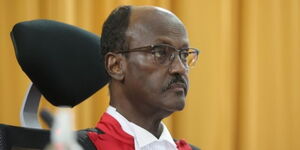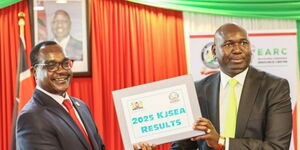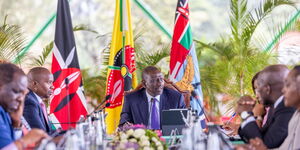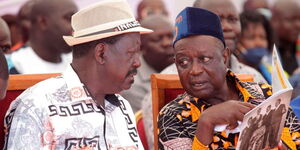Every year, Kenyan learners sing songs and chant in celebration of outstanding performances in national examinations.
This tradition is deeply rooted in Kenyan society, so much so that the proposal to cease ranking Kenyan schools based on their national examination results faced stiff opposition.
The consistent good performances have led to certain schools becoming highly sought-after and marketable.
Despite their impressive track records, these schools are primarily known for their academic achievements, leaving their rich histories in relative obscurity.
Many of these institutions have deep roots dating back to the colonial era, a facet often overlooked in the public consciousness.
Kenyans.co.ke delves into the historical origins of some of these renowned schools, shedding light on their colonial-era names before they were eventually renamed to the familiar titles known today.
Nairobi School - Prince of Wales School
Nairobi School's name has been changed thrice.
Originally established as Kabete Boys Secondary School, the school underwent its first name change when the then-principal, a white settler, deemed the name too cumbersome.
Consequently, it was rebranded as Prince of Wales School. Under this new name, the school's badge displayed the Prince of Wales feathers placed between the horns of the royal impala, symbolizing its affiliation with the title traditionally given to the male heir apparent to the British thrones.
This change in nomenclature was accompanied by the adoption of the school motto, "To the uttermost," a phrase that resonates with a spirit of determination and excellence that has been preserved through the years.
The title "Prince of Wales" itself has historical roots, originating with the Welsh rulers of Gwynedd in the late 12th century, who used it to assert their supremacy over other Welsh rulers.
However, after gaining independence, the school underwent its final name change.
It was renamed Nairobi School, a title that reflects its strong connection to the capital city of Kenya.
This name change marked a new chapter in the school's identity, embracing a sense of national pride and identity while preserving the rich legacy of academic excellence and tradition instilled by its previous appellations. Today,
Nairobi School continues to stand as a beacon of education, nurturing generations of students with its enduring commitment to knowledge, character, and heritage.
Lenana School - The Duke of York School
Lenana School was established in 1949 by colonial governor Philip Euen Mitchell, who was later known as the Duke of York.
He named the school after a British World War II battleship that shared the same title.
The Duke of York is a hereditary title of nobility in the United Kingdom, typically granted to the second son of British monarchs since the 15th century.
The current holder of the title is Prince Andrew, the brother of King Charles III.
Jamhuri High School - The Duke of Gloucester School
In 1952, Jamhuri High School experienced a significant turning point when Prince Henry, the Duke of Gloucester, took a keen interest in the institution and actively supported its development.
His involvement went to the extent of naming the school after himself.
Following Kenya's independence in 1964, the school was renamed "Jamhuri," a Swahili word that translates to "Republic."
This name change symbolized Kenya's newfound independence and sovereignty as a Republic.
Kenya High School - The Nairobi European School
The Kenya High School traces its origins back to 1910 when it was established as the Nairobi European School, initially a co-educational institution housed in buildings designed as police barracks.
In 1931, the school underwent segregation, leading to the separation of boys and girls.
By 1935, it was renamed The European Girls Secondary School, with Miss Kerby appointed as the first Headmistress.
The school's facilities at that time included temporary wooden huts situated on the grounds shared with Nairobi Primary School.
In 1939, the institution underwent another name change, becoming known as The Kenya High School.
It is noteworthy that until 1961, admission to the school was exclusively limited to white students.
The first African student, Ann Mithamo, gained admission to the school that year, marking a significant milestone in its history.
Alliance Girls School - African Girls High School
Established in 1948 by Scottish Missionaries on a 71-acre land, African Girls High School was the pioneering secondary institution for African girls.
Originally a mixed-gender school, it admitted its first female students in February 1948, with four others already studying alongside boys at Alliance High School since 1946 in anticipation of the girls' school's inauguration.
Post-independence, the school was renamed Alliance High School.












